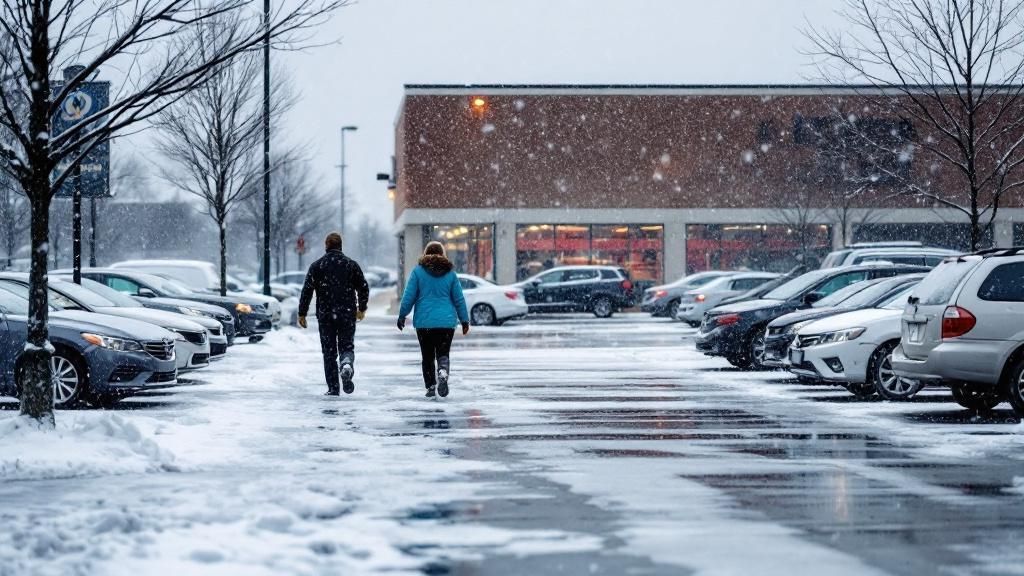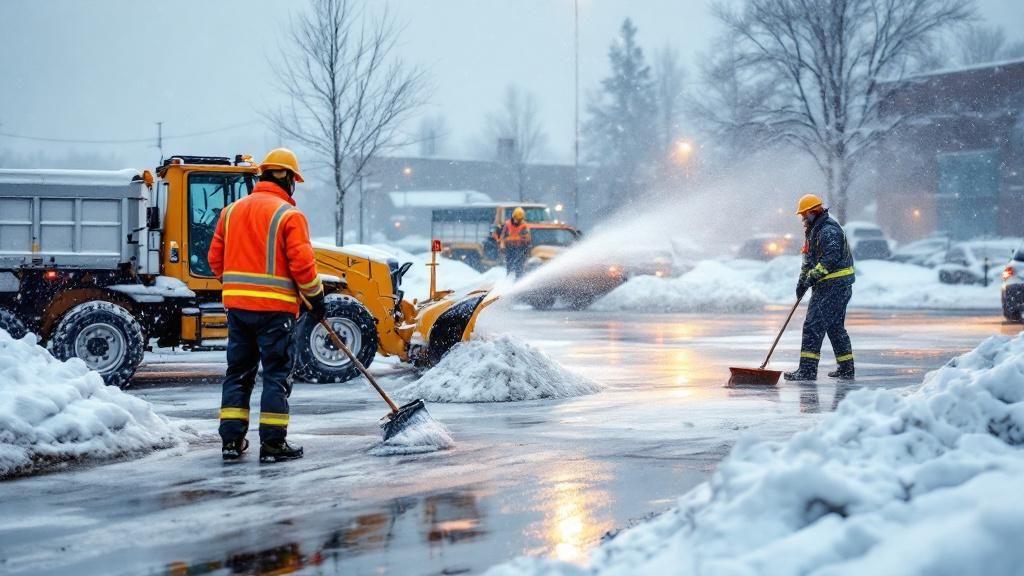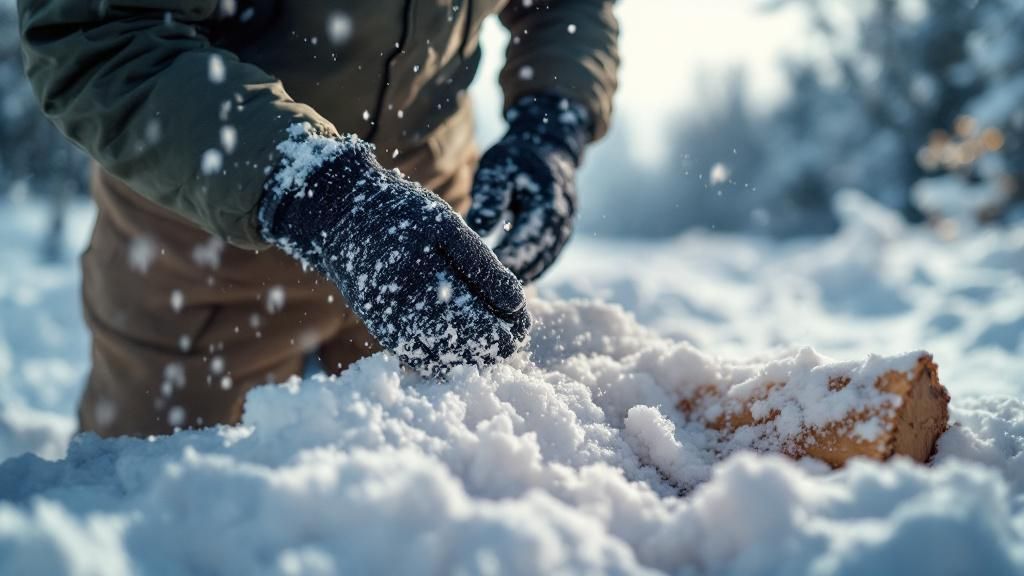
How Snow and Ice Affect Parking Lot Safety
Key Takeaways
-
Snow and ice buildup create slip hazards and driving risks in commercial parking lots.
-
Regular snow removal and proactive ice control reduce accidents and liability exposure.
-
Technological advancements in snow management are reshaping the industry.
-
Proper salt application practices can enhance safety without harming the environment.
-
Professional services help ensure compliance and long-term site preservation.
When winter rolls in, the danger doesn’t stop at the roads. Commercial parking lots become high-risk zones where even a thin layer of ice can cause serious injuries or fender benders. If you’re a business owner or property manager in Alaska, ignoring snow and ice buildup isn’t just inconvenient—it can lead to costly lawsuits, structural damage, and frustrated customers. This article explores how snow and ice affect parking lot safety and what proactive steps you can take to stay ahead of winter hazards.
The Invisible Risks of Snow and Ice Accumulation
It’s easy to underestimate the impact of a few inches of snow or a layer of frost. But in commercial parking lots, even minor accumulation can reduce friction, cause vehicles to skid, and lead to slip-and-fall incidents. These accidents often result in broken bones, concussions, and insurance claims.
Beyond physical injury, snow and ice also threaten your property. Prolonged buildup can damage pavement, create drainage issues, and even increase the likelihood of roof or awning collapse if not managed properly. Maintaining clear surfaces during winter is more than good practice—it’s a liability safeguard.
The Overlooked Complexity of Winter Maintenance
Winter maintenance isn’t just about plowing snow—it’s about strategic, ongoing management. From ensuring crews are trained and compliant with local codes, to having reliable equipment and protocols in place, managing snow is a full-time job during the colder months.
Anchorage and surrounding areas face unique winter challenges that demand proactive planning. This includes everything from de-icing schedules to ensuring walkways remain accessible during freezing rain. If these elements aren’t planned in advance, property owners could face not only higher maintenance costs, but also increased risk to visitors and employees.
The Data Behind the Storm
As snowfall increases, so does liability. The U.S. snow management market held a 74.4% market share in North America as of 2023—a reflection of how serious businesses are getting about mitigating winter hazards.
Today’s best practices go beyond plowing. Liquids like brine solutions, ground speed controllers, and real-time decision support tools are being used by top-tier snow removal teams. These upgrades offer better coverage, faster application, and greater efficiency. For business owners, this means fewer delays, fewer injuries, and reduced exposure to legal claims.
Smarter Snow Management: What Tomorrow Looks Like
The commercial snow and ice management industry was valued at over $22 billion in 2023, with new technologies changing how snow is tackled. From autonomous snowplows to predictive analytics, the industry is becoming smarter, faster, and safer.
Key innovations include:
-
Automated De-Icing Systems: These use sensors to apply anti-icing agents precisely when needed.
-
Robotic Snow Removal: Ideal for smaller lots and sidewalks, these units reduce labor reliance.
-
Data-Driven Planning Tools: Predict snowfall events and optimize response efforts.
Still, technology adoption remains slow in some areas due to cost and operational inertia. That’s why planning, budgeting, and training remain critical. Leveraging these innovations can make a meaningful difference—especially in high-snowfall areas like Anchorage, Eagle River, and the Mat-Su Valley.
Salt Isn’t the Enemy—If Used Right
Salt is a go-to winter maintenance tool, but its overuse can lead to unintended problems. Corrosion, infrastructure wear, and environmental damage are legitimate concerns.
Here’s how to get salt use right:
-
Use calibrated spreaders to avoid over-application
-
Apply salt early (anti-icing) rather than reactively (de-icing)
-
Combine salt with brine solutions for better adherence
Helping Alaskan Properties Stay Safe This Winter
Whether you manage a retail center, healthcare facility, or office complex, the responsibility to provide safe access during the winter season is non-negotiable. In places like Anchorage and the Mat-Su Valley, the stakes are higher given the volume of snow and frequency of freezing conditions.
Partnering with professionals can take the burden off your staff and give you peace of mind. Companies like Titan offer tailored snow and ice management plans that fit the specific needs of your site—ensuring compliance, safety, and reliability through even the toughest winter storms.
FAQs
How does snow affect commercial parking lots?
Snow makes navigation difficult by covering parking lines and creating slippery conditions. It also blocks visibility and reduces space efficiency.
What are the liability risks associated with ice in parking lots?
Ice is a major contributor to pedestrian injuries and vehicle collisions. Failing to address icy conditions could open property owners up to legal claims.
Is regular snow removal necessary for commercial properties?
Yes. Consistent clearing ensures safety, accessibility, and reduced wear on parking lot surfaces.
How can businesses manage ice control effectively?
Apply anti-icing agents before snowfall, monitor temperature trends, and maintain a routine inspection schedule.
Is salt bad for parking lots and the environment?
Overuse is, but smart strategies like pre-wetting salt or using brine help reduce environmental impact while keeping surfaces safe.

